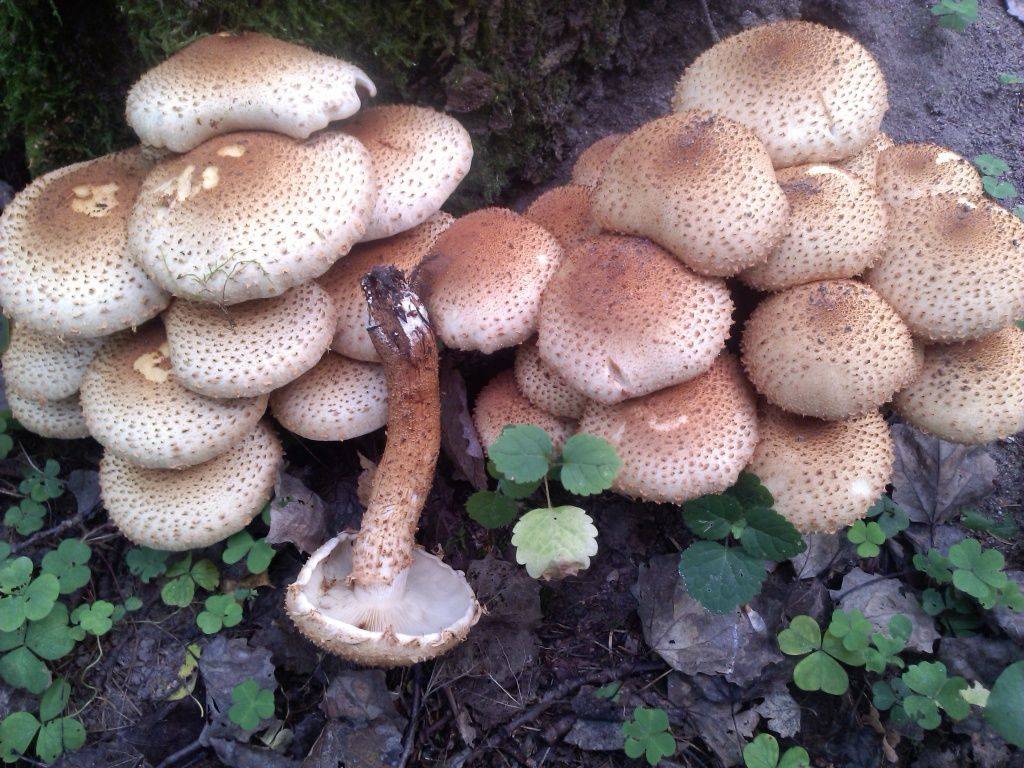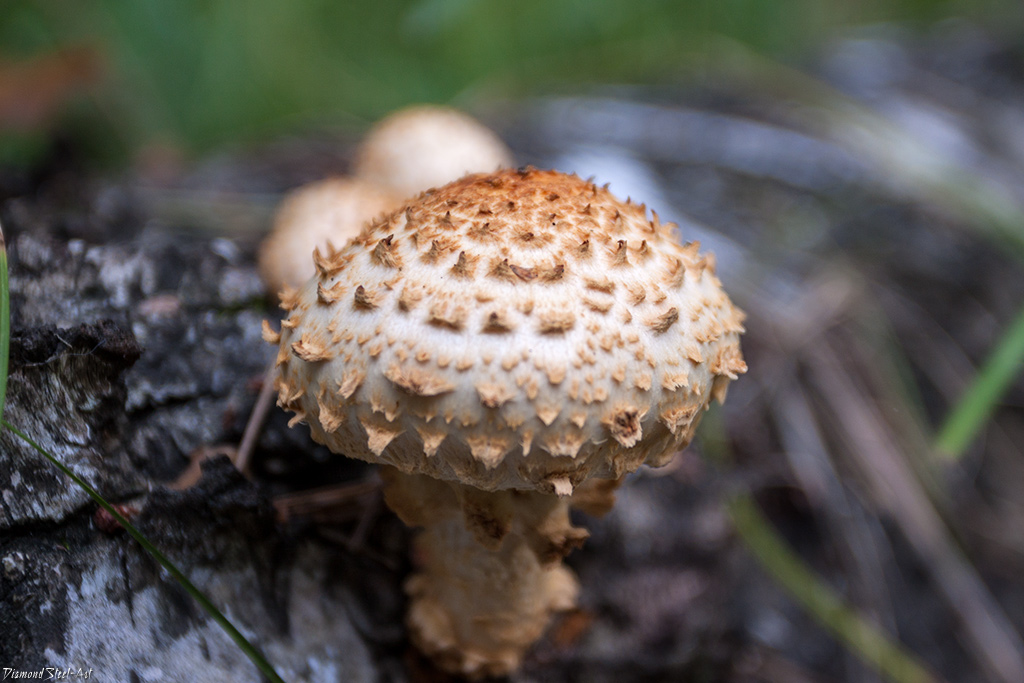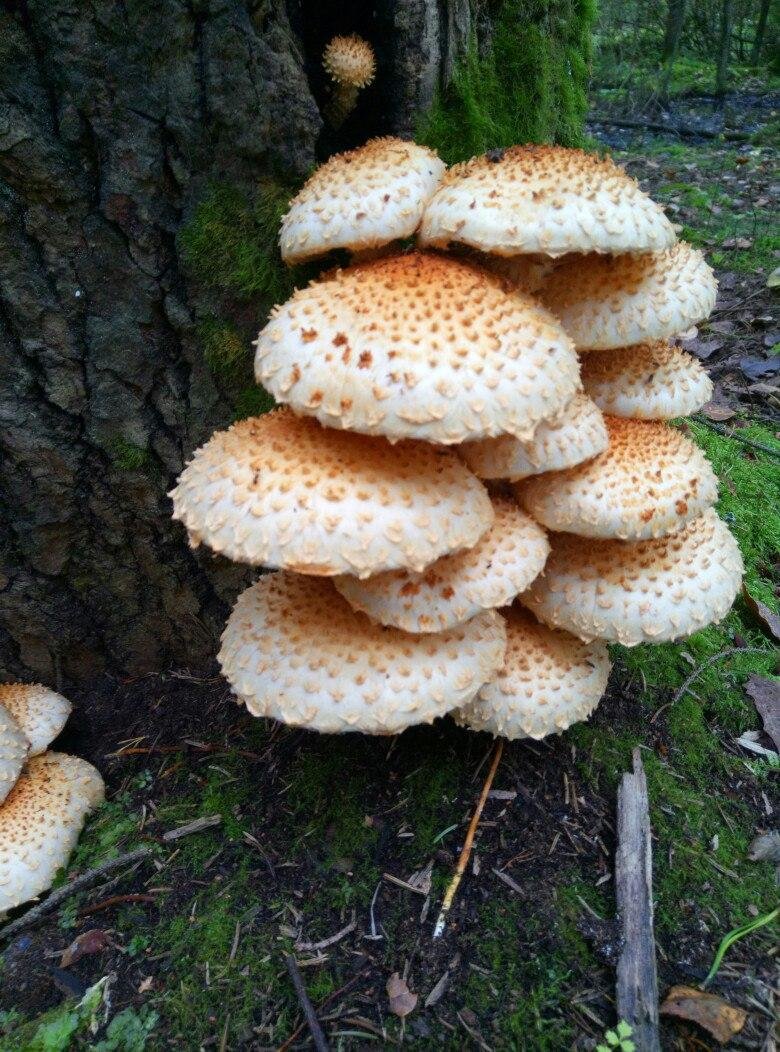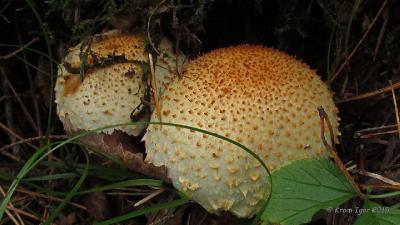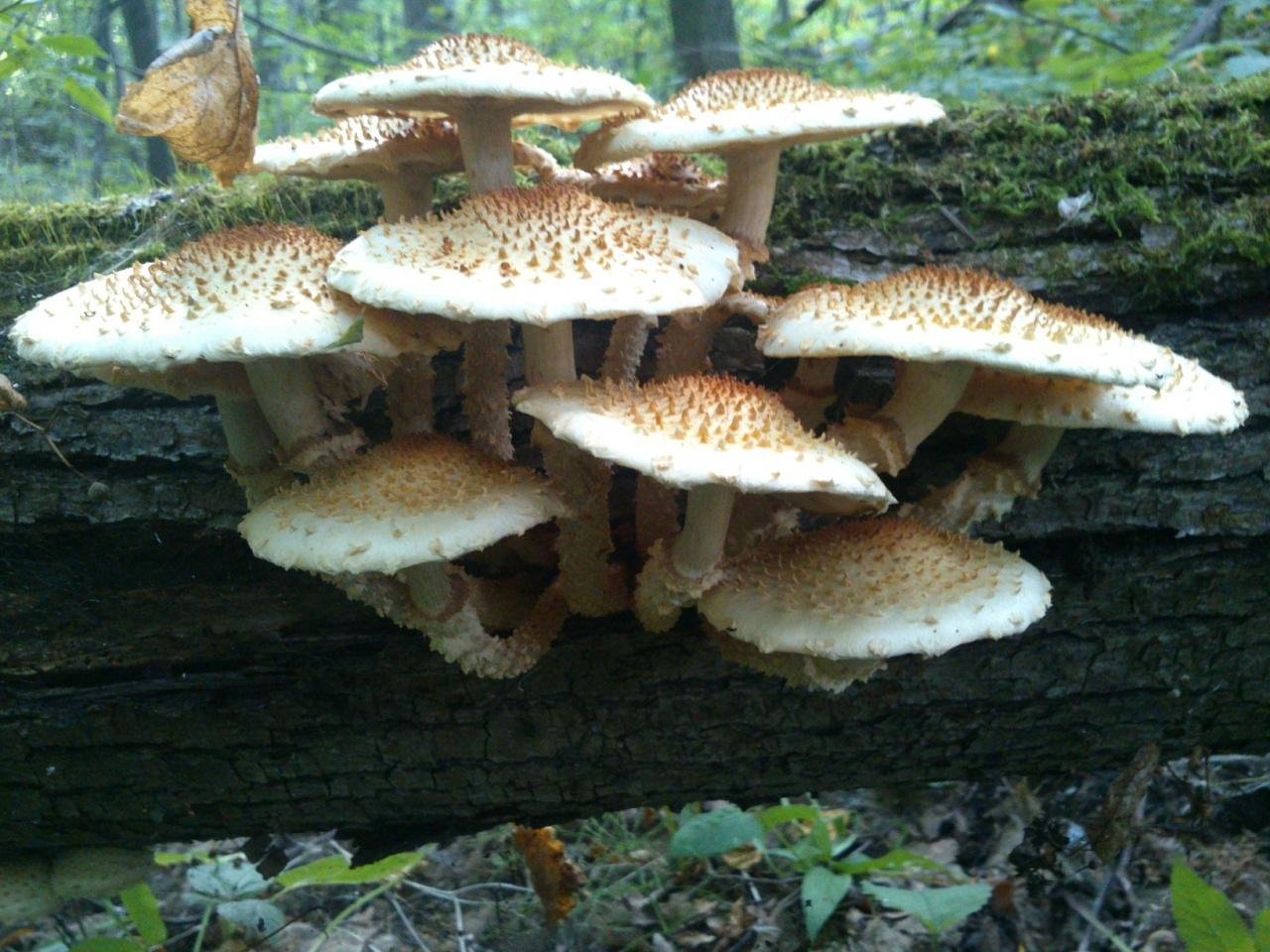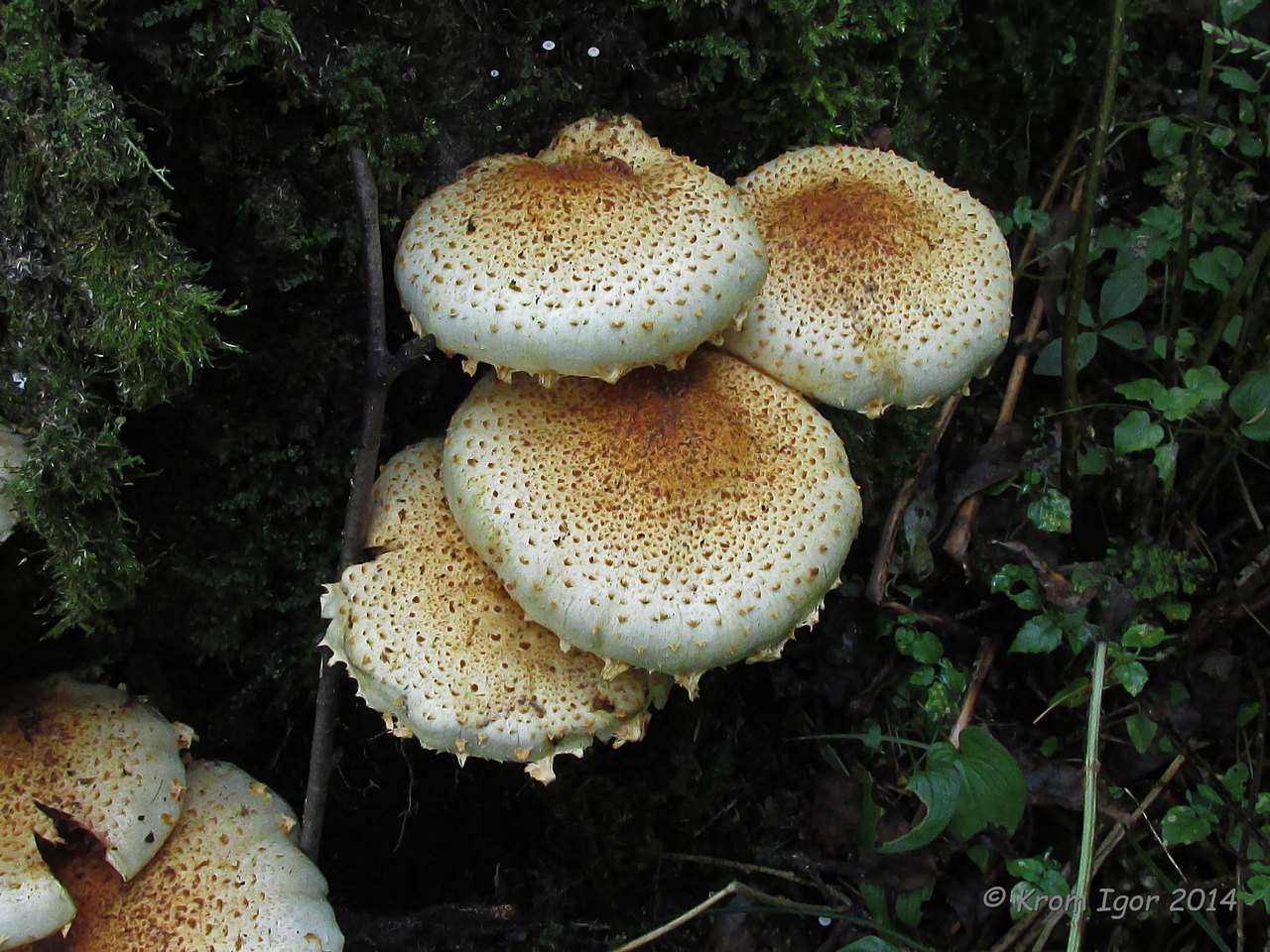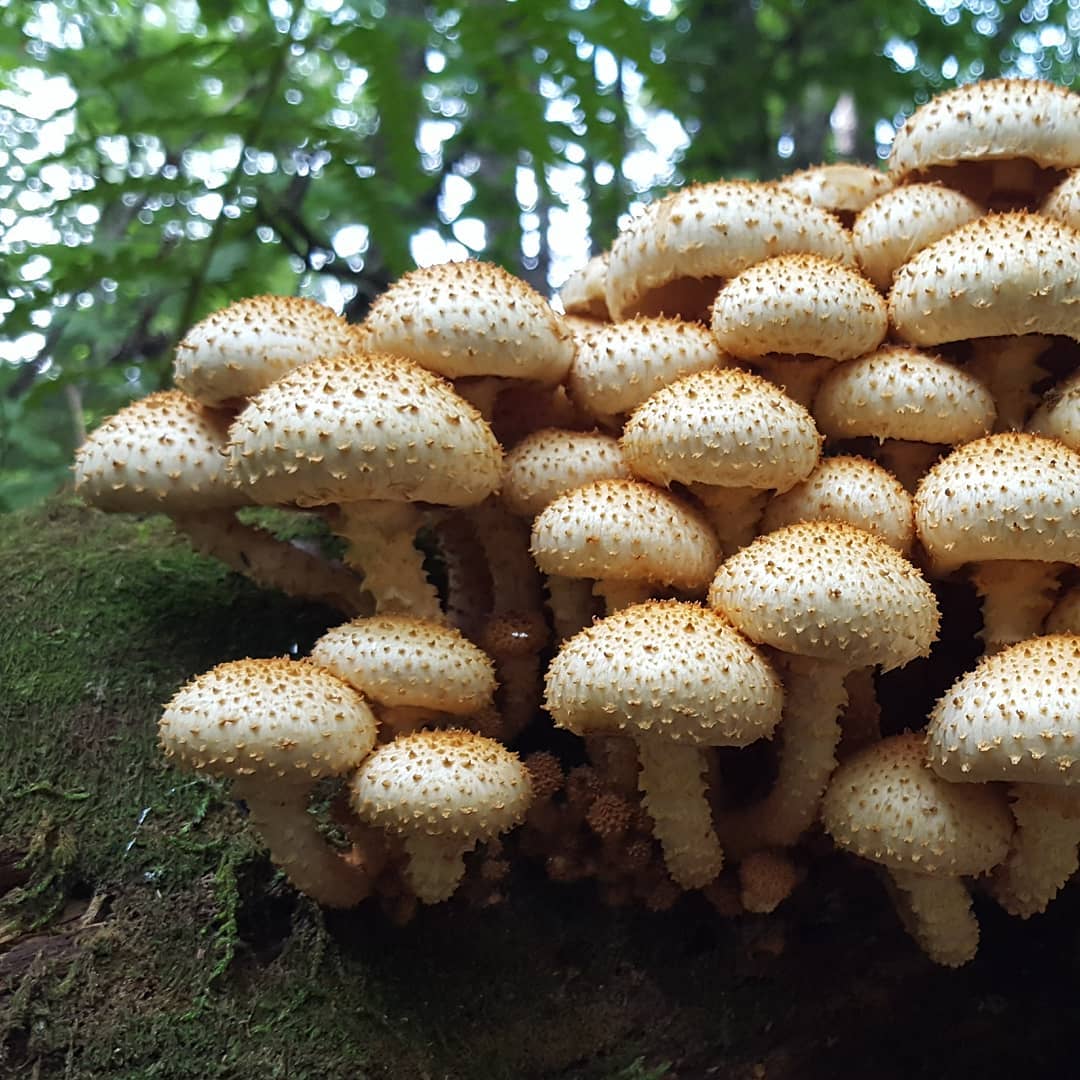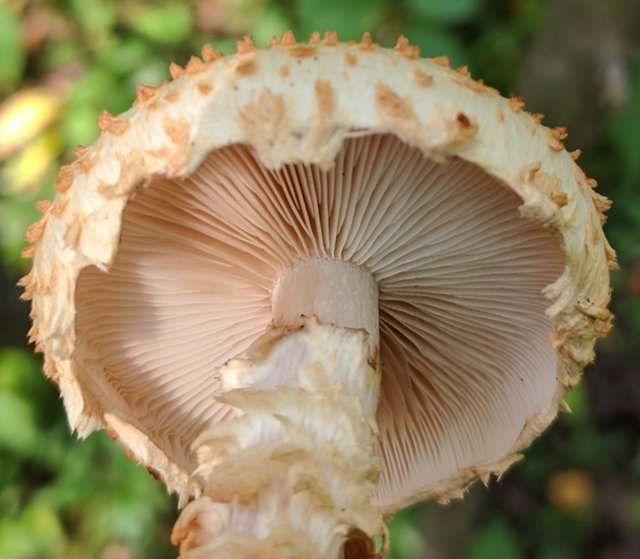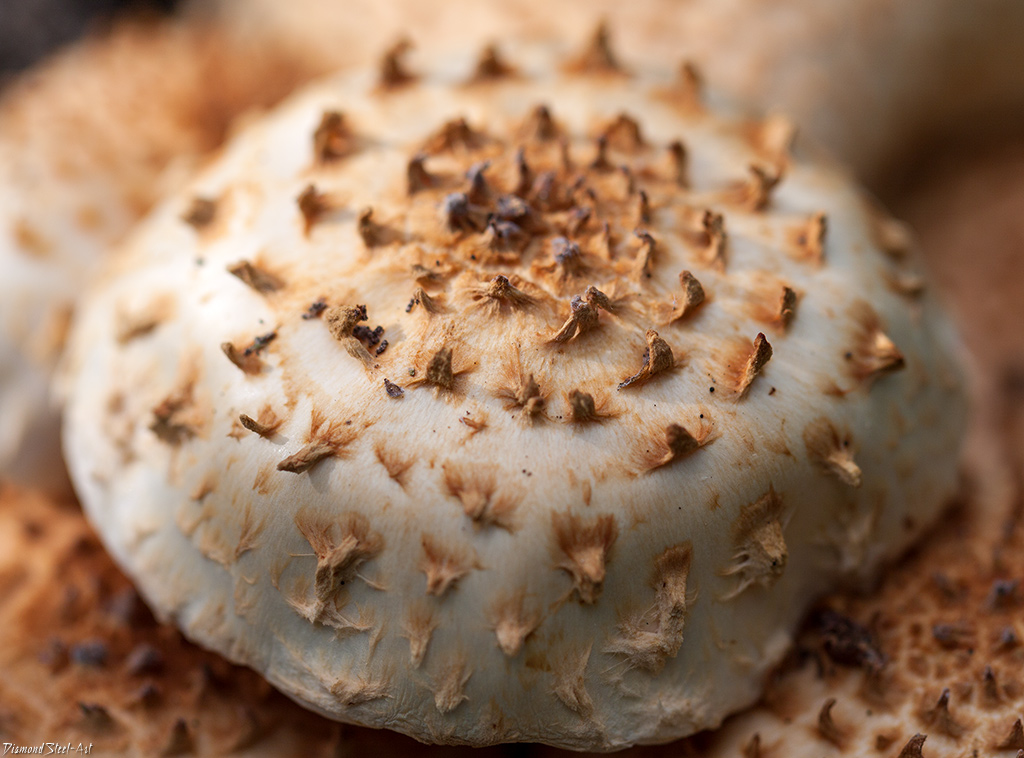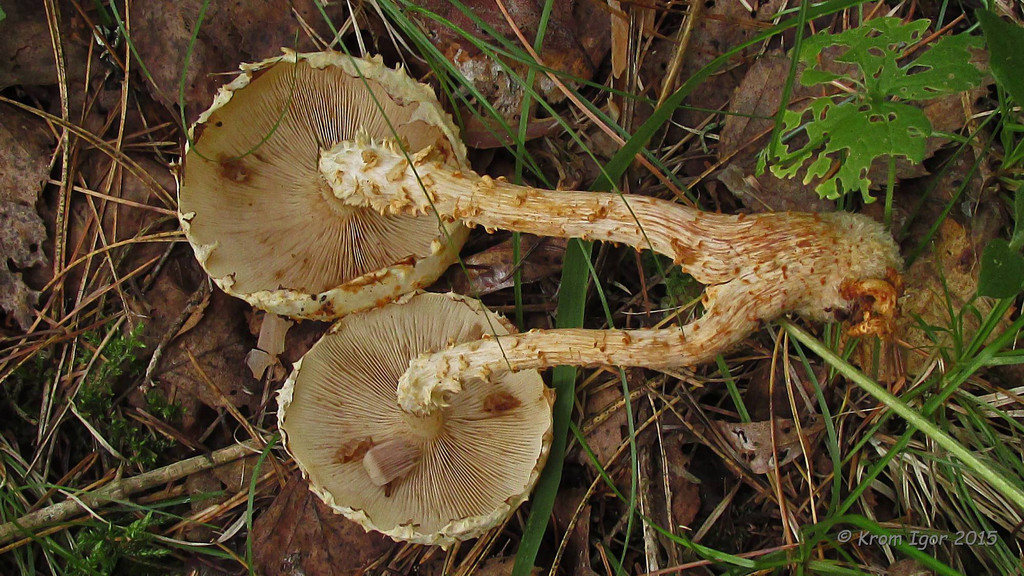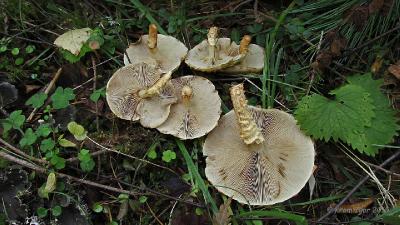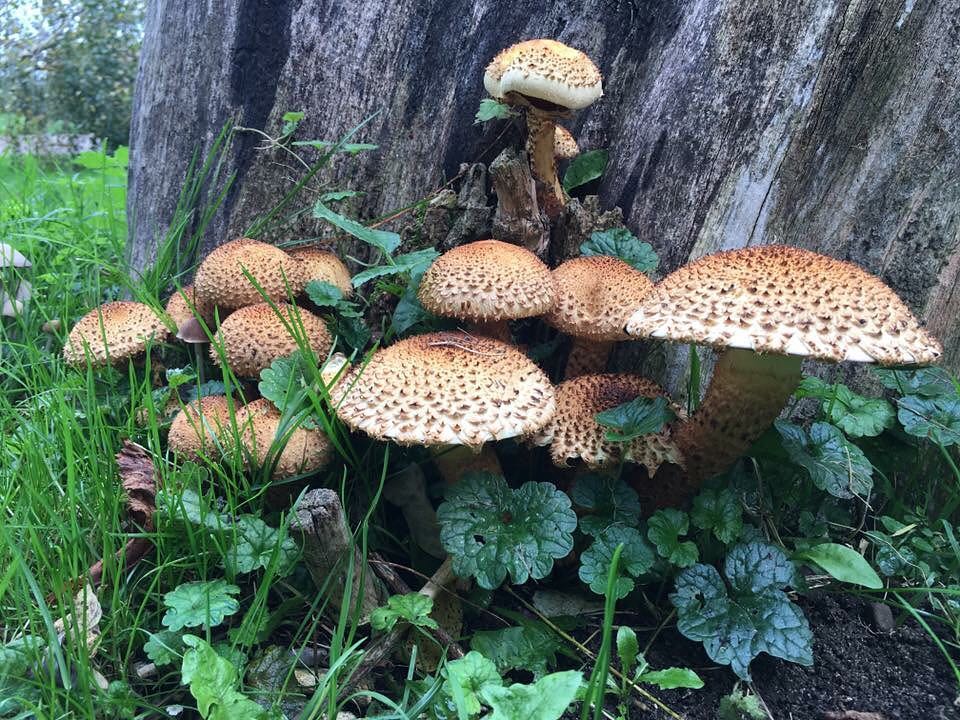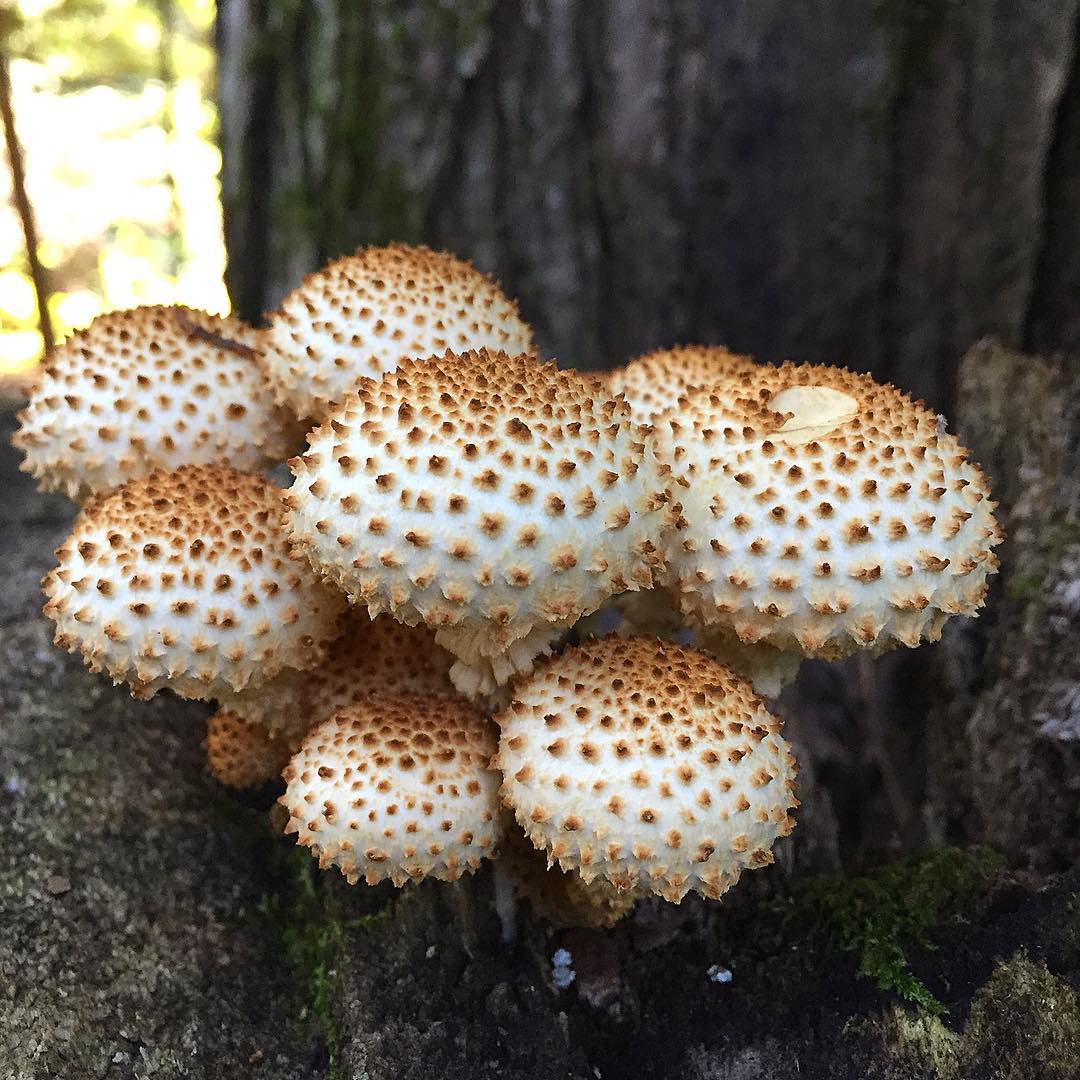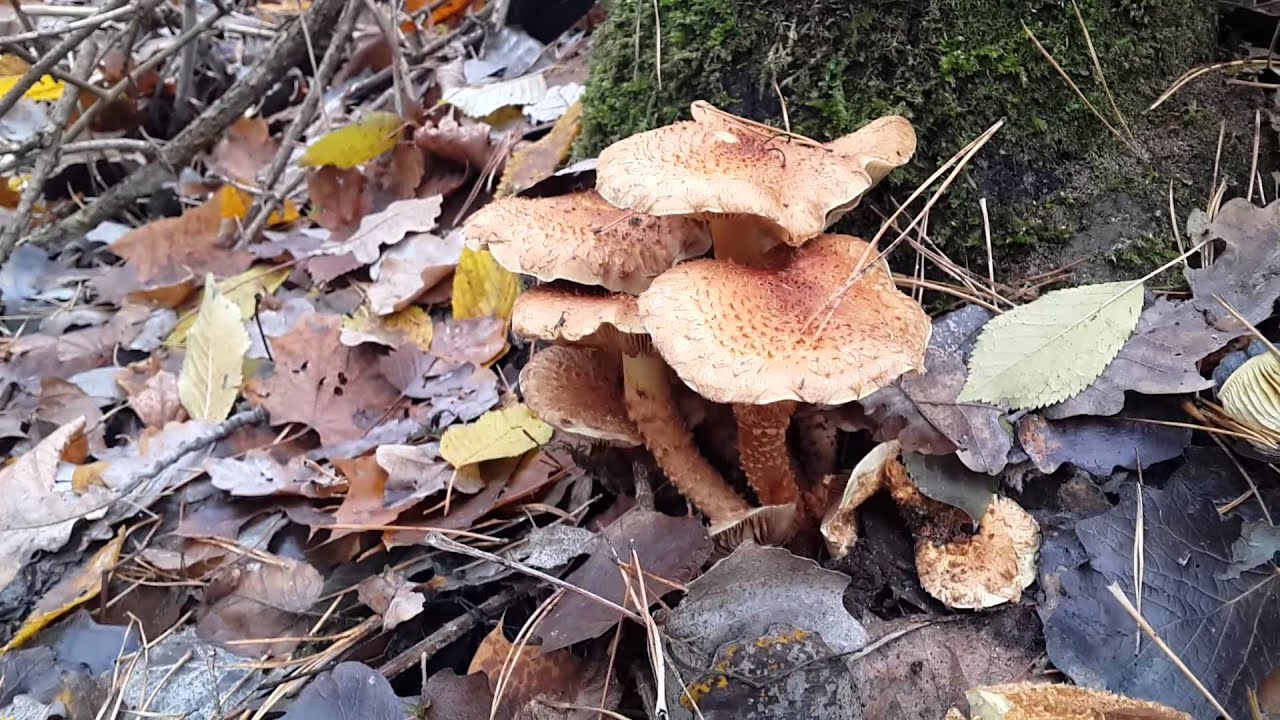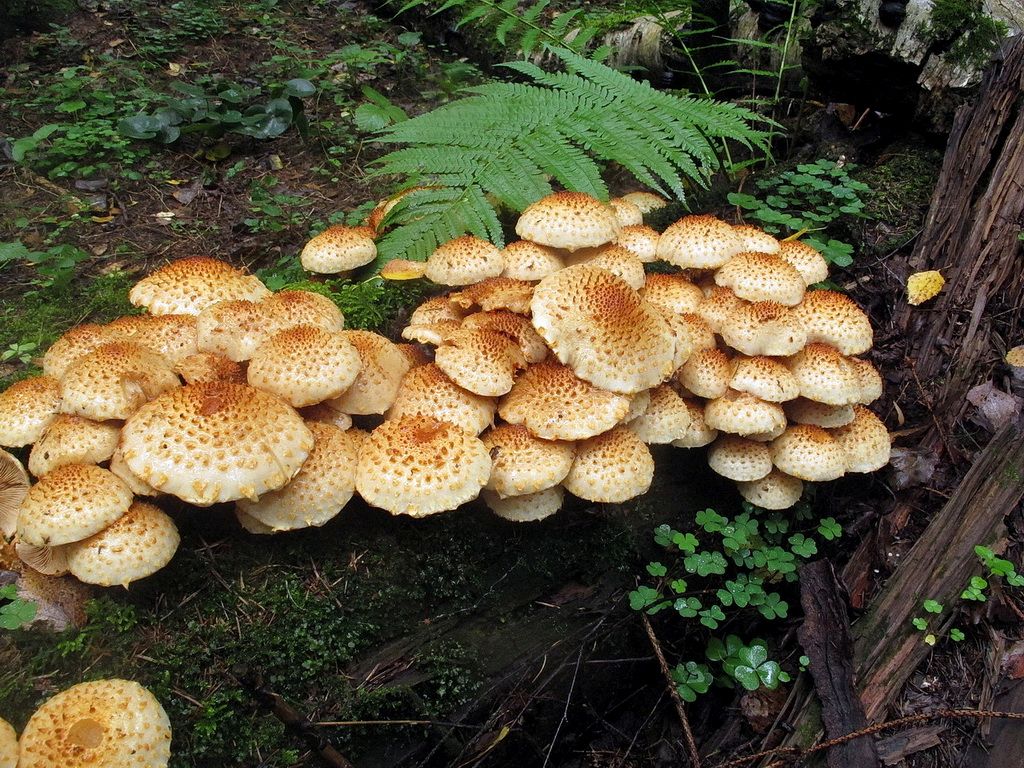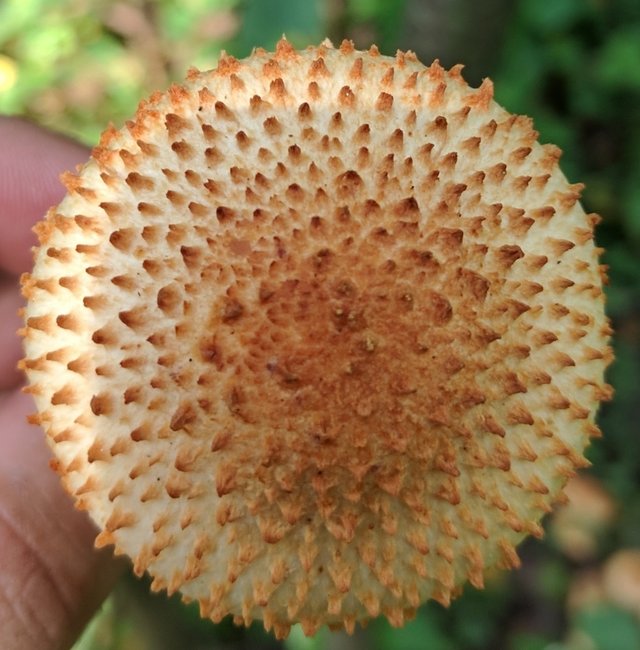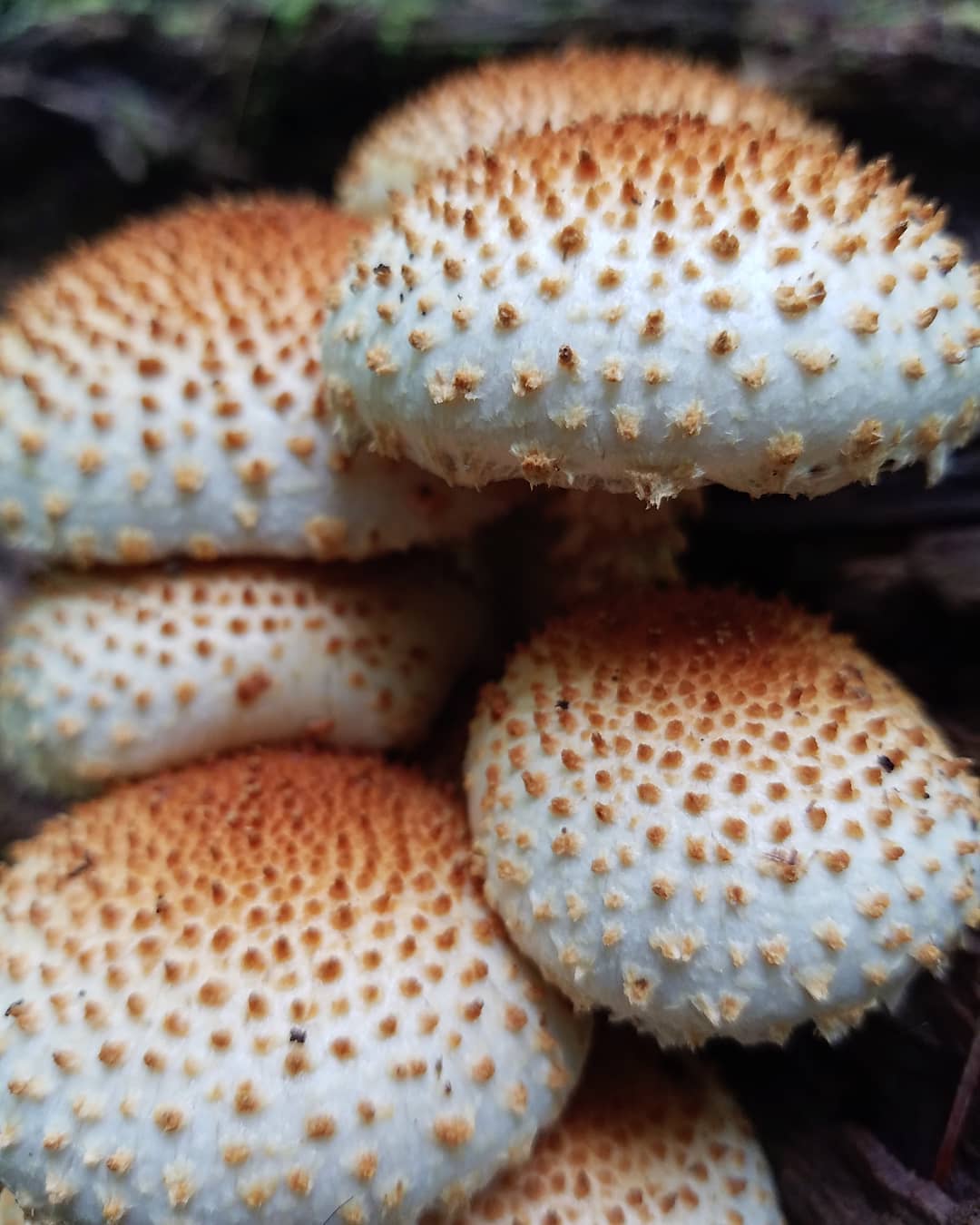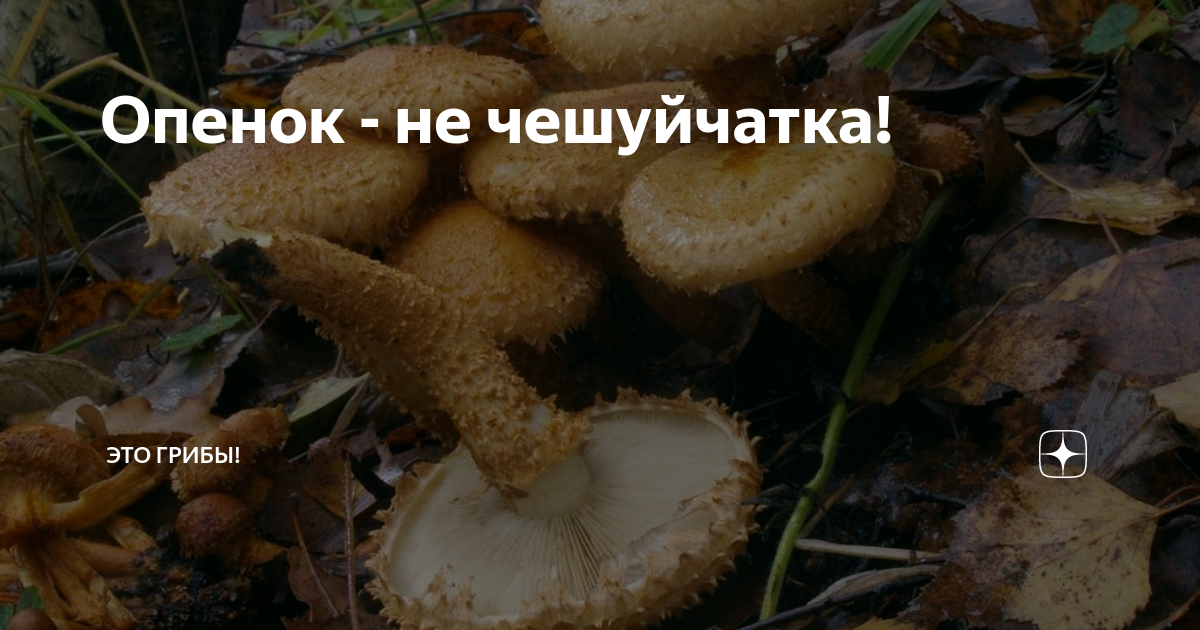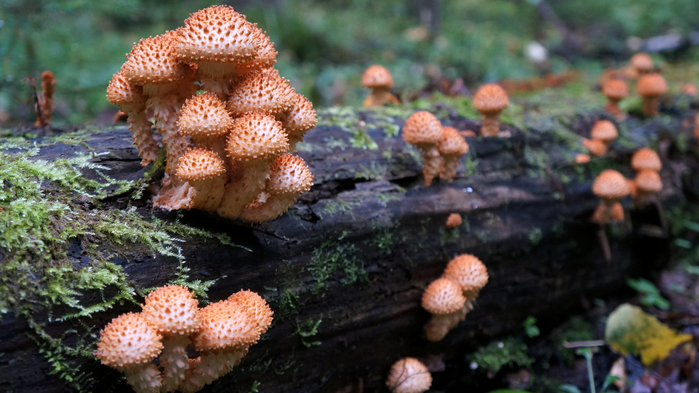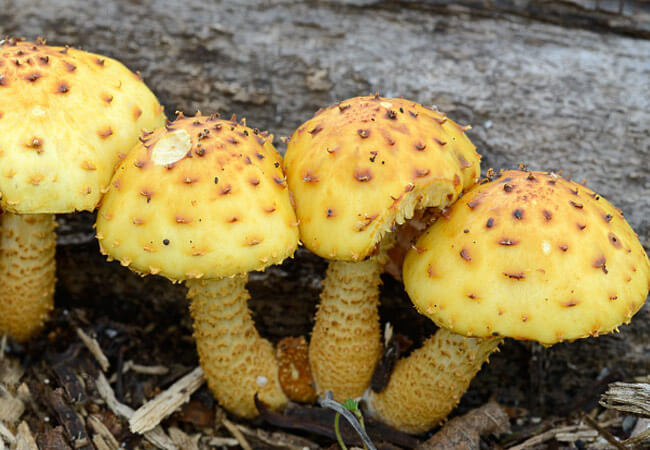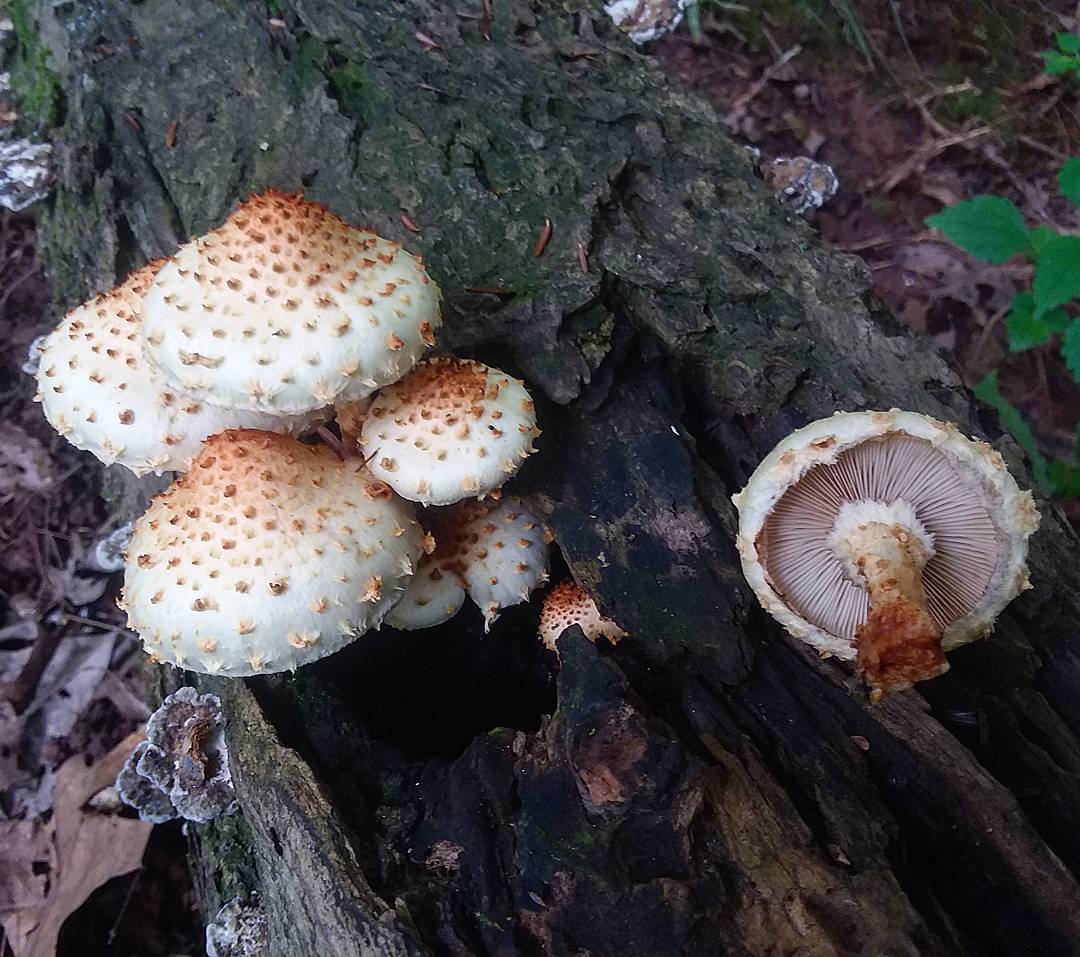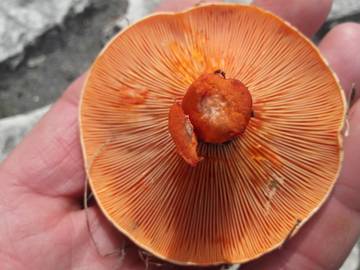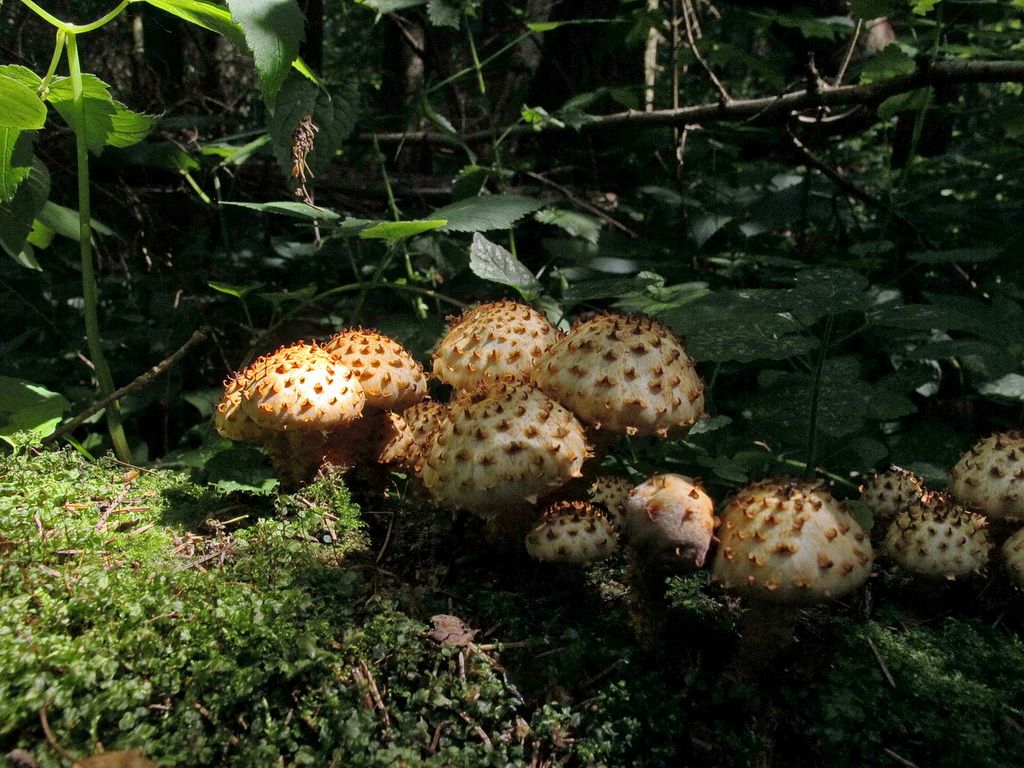Scale common - Pholiota squarrosa
Written by Nikolay Budnik and Elena Meck.
We did not meet common scaly on Ulom Zheleznaya so often. But in most cases, the mushroom grows in large colonies, so you can collect a lot of it at once.
Common flake grows on rotten wood. It can usually be found at the base of weakened trees. The mushroom lives up to its name, because both the cap and the stem are covered with powerful brown scales.
Common flake is edible. In 2015, we collected it, salted it hot and tried it. Not to say that this is a very tasty mushroom, but it is quite possible to eat it. Common flake tastes like autumn honey.

1. Common flakes can be found on decaying wood.

2. Most often these are trunks of weakened trees.

3. These are deciduous trees.

4. Mushrooms usually settle at the base of the tree.

5. They grow in whole bushes.

6. Mushrooms are neat and light.

7. Young mushrooms are completely covered with scales.

8. The scales are sometimes arranged in concentric circles.

9. And in mature mushrooms, they are very noticeable.

11. And these scales are already quite old.

12. Usually mushrooms grow at the base of the tree.

14. Occasionally they can be found on fallen tree trunks.


16. Common scales like a little damp places.

18. They can also be seen in deciduous trees.

19. . and in a mixed forest.

20. The size of the mushrooms is quite large.

20. These are the usual in size ordinary scales.

21. The hat reaches an impressive size.

22. Here we see mature mushrooms.

23. Their leg is also long.

24. The cap is covered with brown scales.

25. Initially, its edges are completely bent inward.

26. Gradually they straighten up.

27. The older the mushroom, the more wavy the edges of the cap.

28. In old mushrooms, the edges even bend up.

29. Plates are frequent and neat.

30. Sometimes scales seem to creep on them.

31. Blades of ocher color.

32. They turn green with age.

33.. and even turn gray.

34. This is how the plates are attached to the leg.

35. Let's take a closer look.

36. Young mushrooms have a very shaggy leg.

37. Gradually the scales are smoothed out.

38.. and become less pronounced.

39. The toothed ring is clearly visible on the leg.

40. From the cap to the ring, the leg is smooth.

41.. and below it is covered with scales.

42. Here you can clearly see what the ring on the leg looks like.

43. This is how the leg joins the hat.

44. The leg is rather long and slightly curved.

45. Inside, it is hollow.

46. The flesh of the common flake is a little hard, especially in the leg.

47. Usually, a lot of mushrooms can be collected from one mycelium.
And now a short video about Scaleworm, which we shot in the fall of 2015. We collected this mushroom after the film and then salted it.
The 2017 film about Scaleworm
Description and classification
The most popular and widespread in the CIS countries are edible and golden types of scales. Hybrids are also distinguished:
- alder;
- ordinary;
- cinder.
Edible scales have a fruiting body, in which a small rounded cap and a low leg are distinguished. The top is orange in color, covered with a small layer of mucus. It grows both in artificially created conditions and in the wild.
The Japanese use it in their national cuisine. Scale golden has a cap 20 cm in diameter, which in young specimens differs slightly upwardly curved edges. It has a tubercle in the center. Its color can vary from yellow to brown. The top is dense in structure. The hat becomes slippery when the air humidity is high. In dry weather, it has a shiny surface and leaks.
In unripe fruits, the pulp is rather dense in structure, with a yellow tint. The leg is strong and does not exceed 15 cm in height.Common flake belongs to the category of conditionally edible mushrooms. This is the most common and popular type. It is bred by Japanese farmers for sale.
In the wild, this species grows in temperate climates. For normal growth, he needs light. The fungus appears on the surface as soon as the snow melts. The fruiting season lasts until October. It grows in rare forests, small parks. It became widespread in Eastern and Western Europe.
Mushroom varieties:
- Hairy scales parasitizes on woody words. It grows in small groups. Her fruiting season lasts from mid-August to November. The cap reaches 10 cm in diameter, convex in shape. Its surface is covered with protruding scales. The pulp is firm and homogeneous. This mushroom tastes like a radish. The leg reaches a height of 12 cm. The mushroom is considered to be edible, it is ranked in the 4th category. However, it is not used in cooking, as it has a bitter taste.
- Poplar scales grow on dry trunks and stumps. The mushroom has spread in the Primorsky Territory and Siberia. It can also be found in forests in the European part of Russia. The diameter of the cap is 15 cm, it is covered with white fibers and has a brown color. The leg is long. Such a mushroom grows from early August to late September. For growth, he prefers birch, aspen, poplar. The mushroom is inedible.
- The fiery scale has a lemon or bright yellow cap and reaches about 10 cm in diameter. Its shade is darker in the center, and large monochromatic scales are located along the edges. In young fruits, the plates are covered with a small mesh, differing in brown color. The pulp is slightly bitter, but has a pleasant aroma. This variety grows in the temperate zone of Russia. Prefers hardwood base. Can be found on mossy soil and tree stumps. This mushroom is not used in cooking because of its bitter taste.
- Scale Alkhovaya grows in groups, adapts well to the substrate near tree trunks. Most often, she prefers birch. Fruiting begins in August and lasts until September. The hat reaches 5 cm in diameter, is small, yellow and has brown scales. The mushroom is inedible.
- Cinder flakes have a hemispherical cap. It unfolds somewhat as it matures. The top of the fruit reaches 6 cm in diameter and is characterized by a reddish-brown color. The surface is covered with mucus and has small fibrous scales. The pulp is light yellow and firm. This mushroom has no smell or taste. The plates are adherent, frequent. The fruiting season is from May to September. It grows mainly in places where fire is made.
Growing scales at home
Of all the types of flakes, it is best to cultivate mushrooms with a hint, it is edible flake, it is also slimy flake. This mushroom is very popular in Asian cooking, especially the Japanese and Chinese who grow hint on an industrial scale.
By the way, edible flakes can also be found in our retail network. The cans of canned mushrooms on the shelves of our supermarkets are very often filled with honey agarics. However, due to the fact that this mushroom is very unfamiliar to the domestic buyer, marketers prefer not to indicate the name of the canned mushroom, so as not to embarrass the timid domestic consumer.
For the cultivation of mucous flakes, substrates made on the basis of waste from the wood processing industry, as well as some types of agricultural production, are excellent. In other words, the nutrient medium for the development of mycelium and the appearance of fruit bodies are sawdust (primarily deciduous trees) or chopped straw, to which sunflower husks, wheat bran, chopped corn cobs, etc. are added.
The resulting substrate is sterilized by keeping at a temperature of about 100 ° C for 5 hours.For convenience and reliability, it is recommended to form small blocks from the substrate in advance, sterilizing them in this form, and not as a total mass. Then the substrate must be moistened, bringing it to 65-70% humidity.
Mycelium can be purchased either at the gardener's shop or online. The planting rate is 5% of the substrate mass. In this case, the mycelium is planted without fail under sterile conditions and at a temperature not exceeding 30 ° C.
After that, the substrate is placed in a room (or incubation chamber) with a temperature of about 27 ° C for 2-3 weeks. At this stage, the flakes do not need lighting, but the air humidity must be maintained at about 80%.
After the specified period, the substrate overgrown with mycelium is transferred to another room, where the air temperature is about 11 ° C, and the humidity is at least 98%. In this case, the substrate needs normal air exchange, so it is no longer possible to keep it in tight bags.
As soon as the first rudiments of fruiting bodies appear on the substrate, their growth should be stimulated by increasing the air temperature by an average of 5 ° C. You can also lower the humidity a little - literally by 5-10%. At this stage, you need to provide good lighting for at least 10-12 hours a day.
Having withstood the technology, you can collect mushrooms with a total mass of up to 30% of the mass of the original substrate.
There is also an alternative method that mimics the natural conditions in which the scaly fungus grows. This is solid wood. For these purposes, a stump or deck of deciduous tree is suitable. It is best to use aspen, poplar, willow, or birch. Also, some fruit trees, for example, walnut, apple, plum, show themselves well.
The mycelium must be placed in the previously made cuts in the wood. It is recommended to make simple holes with a drill, placing them at least 15 cm apart. The cuts should be about 4 cm deep and no more than 3 cm in diameter.
Some amateur mushroom pickers also practice a very unusual method - they split the log lengthwise, pour a thin layer of mycelium into the split, and then, putting the halves together, twist them tightly with wire.
Beneficial features
The pulp of royal mushrooms is good for health, because, with its low calorie content, it contains the entire spectrum of essential amino acids, and in terms of the amount of phosphorus and calcium, it is comparable even to fish fillets.
Due to the presence of iron and magnesium in the pulp, these mushrooms are involved in the processes of hematopoiesis, normalize the conduction of impulses along nerve fibers, affect the synthesis of proteins in the human body and are catalysts for various chemical reactions.
In golden, gummy and edible foliots, substances were found that exhibit bactericidal and antifungal effects. The mucus covering the surface of the fruit bodies of golden and edible scales has the following properties:
- stimulate cerebral circulation;
- improve immunity;
- relieve fatigue;
- restore vitality.
The flakes contain squarrozidine, a unique compound that inhibits the xanthine oxidase enzyme. The enzyme xanthine oxidase promotes the crystallization of uric acid in joints, kidneys and body tissues. By inhibiting this enzyme, squarrozidine prevents the loss of urate salts and thus prevents pain attacks in people with gout. In clinical practice, drugs containing a xanthine oxidase inhibitor as an active ingredient are used to treat gout.
There is evidence that drugs made on the basis of these mushrooms are capable of exhibiting anti-cancer properties.
How to collect correctly
There are no false flakes that are hazardous to health that can be confused with them when collected. The characteristic roughness, easily found in most species, always distinguishes mushrooms from poisonous "imitators". Another feature that distinguishes flakes is bright colors with an admixture of ocher.
Mushrooms are collected according to the general rules: they are carefully cut with a knife, leaving the mycelium in place. After a few weeks in the same place, you can collect the scales again. Most often, mushrooms appear in the middle of summer, sometimes the first families of foliots are found in May.Harvesting continues until late autumn, mushrooms can withstand even small frosts.
An unpleasant smell or bitter taste warns of the inedibility of the mushroom. Toxic types of scales are distinguished by a broken cap or leg. The pulp in the air changes color, becoming brown. Conditionally edible species are rather pungent in smell and taste, there is no real bitterness in them.
Important! Before consuming large amounts of flake, it is worth eating a small piece of boiled mushroom for testing. After making sure that this species is edible, and the body does not have an allergic response within a few hours, the product can be introduced into the diet.




